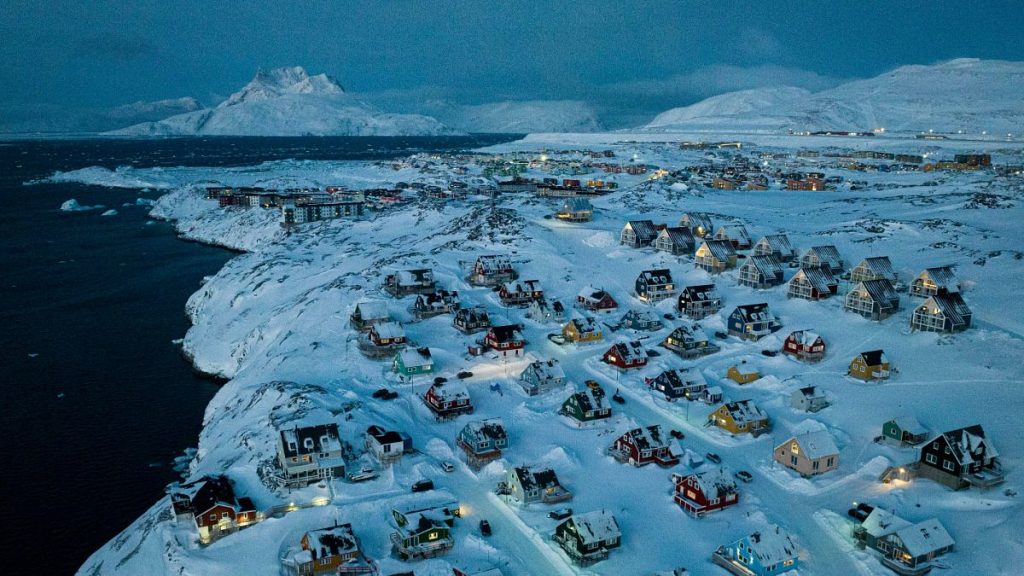During a recent visit to the Pituffik Space Base in Greenland, US Vice President JD Vance criticized Denmark for allegedly underinvesting in the security of Greenland, calling for a significant change in Copenhagen’s approach. His remarks came in the context of growing tensions over Arctic security and accusations that Denmark has failed its responsibilities toward the semi-autonomous territory. In response, Denmark’s Foreign Minister, Lars Løkke Rasmussen, pushed back against Vance’s remarks, defending the country’s investments in Arctic defense while advocating for further cooperation with the United States.
| Article Subheadings |
|---|
| 1) Criticism from the US Vice President |
| 2) Denmark’s Response to US Criticism |
| 3) Historical Context of US and Denmark Relations |
| 4) The Local Reaction in Greenland |
| 5) Future Implications for Greenland and the Arctic |
Criticism from the US Vice President
During his visit to the Pituffik Space Base on Friday, Vice President JD Vance addressed US personnel by stating that Denmark had “underinvested” in Greenland’s security. This assertion is particularly noteworthy given the context of intensified focus on Arctic regions as a strategic element in global politics. Vance emphasized that the residents of Greenland deserve better support from Denmark and that the US must take a firm stance to ensure the security of the island. The timing of Vance’s comments is significant, as it coincides with ongoing discussions around the necessity of Arctic militarization, especially given the region’s strategic importance for both the US and its allies.
Denmark’s Response to US Criticism
In response to the critical statements made by JD Vance, Danish Foreign Minister Lars Løkke Rasmussen conveyed his discontent, asserting that Denmark is indeed increasing its investments in Arctic defense. He claimed that the style of criticism coming from the US is unwarranted, especially considering the long-standing alliance between Denmark and the United States. Rasmussen noted that despite the criticism, Denmark is prepared to have a substantial discussion about enhancing military presence in Greenland if that is what the US desires. This assertion was underscored by the announcement of a 14.6 billion Danish kroner investment in Arctic security measures, which includes new naval vessels, drones, and satellite technology.
Historical Context of US and Denmark Relations
The relationship between the United States and Denmark is rooted in a historical alliance that dates back several decades. It includes a critical 1951 defense agreement specifically regarding Greenland, a territory with strategic relevance given its geographical location. Over the years, the American military presence in Greenland has significantly diminished from thousands of troops located across the island to a mere 200 stationed at the Pituffik Space Base. Rasmussen’s remarks that this agreement allows for a stronger US military footprint in Greenland indicate that there exists a framework for collaboration should both nations choose to capitalize on it.
The Local Reaction in Greenland
The comments made by Vice President Vance and the subsequent media coverage have sparked significant backlash among the local population and political figures in Greenland. Many residents are feeling a mixture of anger and resentment towards the Trump administration’s perceived threats to annex Greenland, leading to public protests against US intervention in local affairs. Members of Greenland’s parliament have been vocal in their opposition, indicating that the prospect of US control is not welcomed. Instead, there is a growing sentiment for greater independence from Denmark, alongside skepticism about the US’s true intentions regarding military presence and economic aid.
Future Implications for Greenland and the Arctic
The escalating rhetoric surrounding US involvement in Greenland’s defense could have lasting implications for the region’s political landscape. If the US continues to push for more direct engagement in Greenland, it might compel Denmark to reassess its approach to Arctic defense. Furthermore, Greenlanders’ calls for greater autonomy are likely to gain momentum, potentially reshaping the territory’s governance structure in favor of increased independence. The conversations initiated by leaders on both sides will also influence the broader dynamics of Arctic politics, especially as global interest in this strategically vital region continues to grow.
| No. | Key Points |
|---|---|
| 1 | US Vice President JD Vance has criticized Denmark for underinvesting in Greenland’s security. |
| 2 | Denmark’s Foreign Minister Lars Løkke Rasmussen defended his country’s investments in Arctic security. |
| 3 | The US military presence in Greenland has significantly reduced since the 1950s, now concentrated at Pituffik Space Base. |
| 4 | Local reactions in Greenland show skepticism towards the prospect of US intervention and a growing desire for independence. |
| 5 | Future political dynamics in Greenland may lean toward increased autonomy and reassessment of US-Denmark relations. |
Summary
The recent comments made by Vice President JD Vance regarding Denmark’s investment in Greenland’s security underscore the complexities of Arctic geopolitics. As discussions unfold, both the US and Denmark must navigate the increasing demands for local autonomy from Greenland’s residents while maintaining their longstanding alliance. The interactions between these nations will likely shape future policies and defense strategies in the Arctic, impacting not just political relations but also economic and security frameworks in the region.
Frequently Asked Questions
Question: What sparked Vice President Vance’s criticism of Denmark?
Vice President JD Vance criticized Denmark during his visit to the Pituffik Space Base, claiming that they had underinvested in Greenland’s security and called for a change in Copenhagen’s approach.
Question: How did Denmark respond to the US criticism?
Danish Foreign Minister Lars Løkke Rasmussen defended Denmark’s efforts in Arctic defense, stating that investments are being made and indicating openness to discussing a stronger US military presence in Greenland.
Question: What are the historical ties between the US and Denmark regarding Greenland?
The US and Denmark have a historical alliance backed by a defense agreement from 1951, which currently allows for limited American military presence in Greenland. Over the years, this presence has diminished significantly, raising questions about future collaborations.


